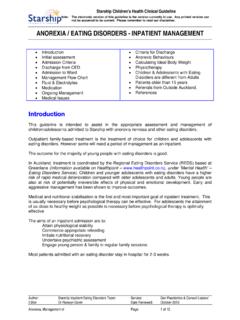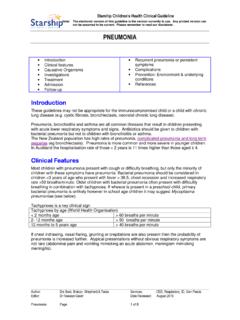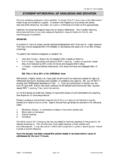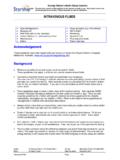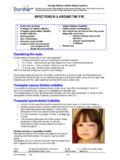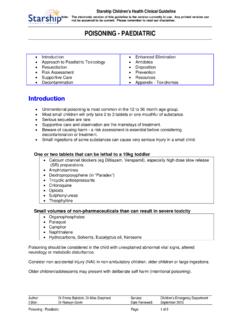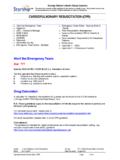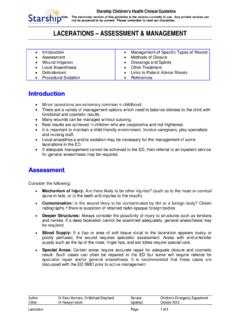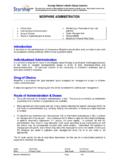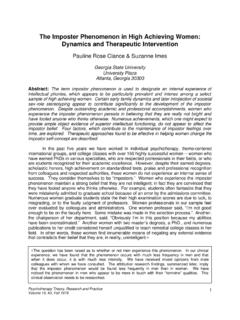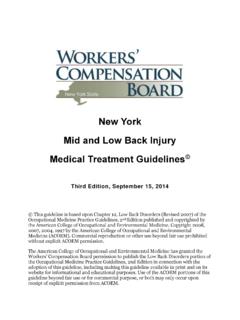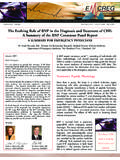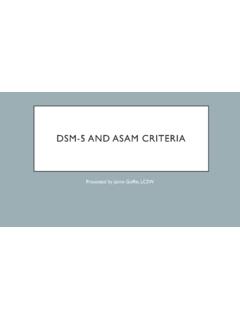Transcription of Treatment Approaches for Borderline Personality …
1 Treatment Approaches for Borderline Personality DisorderAugust 2003- 1 - Treatment Approaches for Borderline Personality DisorderMike Batcheler and Auckland DHB Balance TeamThis paper review the literature on the Treatment of BPD and concludes with asummary of the areas of consensus between the evaluated Approaches . In includesliterature published before mid 2003 and primarily considers Treatment form theperspective of DHB Behavioural Assisted Cognitive Noteworthy Cognitive-Behavioural Controlled Noteworthy Psychodynamic and Other Analytic Case Management/ No-therapy therapy .. of Approaches for Borderline Personality DisorderAugust 2003- 2 -IntroductionTreatments for BPD clients do not lend themselves to easy evaluation due topervasive longstanding problems, complex co-morbidities and high Treatment dropoutrates.
2 However since the early 1990s there has been a strong interest in BPD acrosspsychiatry, psychotherapy and clinical psychology. There is now a growing body ofempirical literature to guide Treatment selection and service development for BPDadults. Unfortunately the literature has few randomised-controlled trials or other suchstudies. Treatment decisions must still be guided by a weaker scientific basis thanfound in other domains of psychiatry/psychology. The APA (2001) advise caution inreading the literature due to uncertainty generated by:1. the heterogeneous presentations, range of clinical severity and frequent co-morbidities of clients within the BPD diagnostic criteria;2. variable research criteria for including or excluding clients;3.
3 Questions concerning the applicability of findings from specialised researchfacilities to general Treatment services. This point may be particularly pertinentwhen attempting to apply a psychotherapeutically based approach across a DHBtreatment system;4. the multi-component nature of most Treatment , in which active treatmentelements have not been identified;5. the lack of control of adjunctive medications in many psychotherapy evaluations;and6. the lack of literature specifically regarding adolescents, although findings fromadult studies may generalise to younger age groups (at least in principle, if notpractice).Authoritative ReviewsIt is beyond the scope of this paper to extensively review the extensive literature onthe Treatment of BPD.
4 However we have summarised some recent literature reviewsand current Treatment Approaches . Interested readers are encouraged to follow up thecited references and more current Cochrane Collaboration (for evidence based health-care) has not reviewed thetreatment of BPD. Regarding deliberate self-harm, it states there is insignificantevidence to make firm conclusions but notes significant benefits from DialecticalBehaviour Therapy (DBT) and flupenthixol as well as non-significant benefits fromproblem-solving therapy and an emergency contact protocol (Hawton et al, 1998).In recent meta-analyses Bateman and Fonagy (2000) and Leichsenring and Leibing(2003) have both reviewed a number of reports (25 and 22 respectively) of thepsychotherapeutic Treatment of all Personality disorders , including BPD.
5 Selectedstudies varied by diagnostic grouping, Treatment approach, setting, duration anddesign. Both reports concluded positive effects from a range of psychotherapies butthey were unable to determine if any particular approach was superior to a minority of the studies contained BPD-only groups and even feweremployed randomised-controlled Approaches for Borderline Personality DisorderAugust 2003- 3 -In its Treatment Guidelines for BPD (2001) the American Psychiatric Associationconcludes that the primary Treatment of BPD is psychotherapy complimented bysymptom-targeted pharmacotherapy. The guidelines state that at the time of writing ithad not been established that any one form of psychotherapy was superior to these guidelines have not answered all the questions nor resolved themany debates.
6 They have been received as: Important in finally recognising BPD to be in the same category of clinicalimportance as other major psychiatric conditions (Paris, 2002); Limited by research base and with a limited consideration of psychoanalytic andpsychodynamic treatments (McGlashan, 2002); Weak, misleading or inaccurate while favouring psychoanalytically informedpsychotherapies over cognitive-behavioural therapies. (Sanderson, Swenson andBohus, 2002); Not necessarily representing advancement in the understanding of this disorder(Tyrer, 2002).Also note that these guidelines reflect the American cultural values, healthcare modelsand legal environments, which are significantly different from New Zealand.
7 Theymay not generalise easily to the New Zealand DHB environment when consideringimportant issues such as cultural responsiveness and risk LiteratureIn the literature, treatments are often described as either psychodynamic or cognitive-behavioural despite the considerable differences of both theory andprocess within either grouping, and despite the blurring of these Approaches evidentwithin more contemporary and integrative Approaches . As such we describe somemain themes within those groupings and pay particular attention to approachessupported by: A strong clinical literature; A trained or interested health workforce within New Zealand; Rigorous evaluations such as randomised-controlled trials (RCT), widely regardedas the "gold standard" in evaluation.
8 However in complex treatments RCT canhave limitations and have been described as sometimes unnecessary,inappropriate, impossible, or inadequate (Black, 1996, also Wells, 1999). Carefulobservational (cohort and case control studies) designs can help provide a fullerpicture and some have been included focus on Approaches used with BPD clients at the more severe end of thecondition, reflecting those most likely to be found within DHB Behavioural StudiesCBT conceptualisations typically accept the DSM IV description of BPD and thenformulate a theoretical definition of BPD within their own terms. For instance Linehan(1993) states that BPD is primarily a pervasive dysfunction of the emotion regulationsystem.
9 Beck and Freeman (1990) describe three core cognitive schema present in BPD as The world is dangerous and malevolent , I am powerless and vulnerable and I aminherently unacceptable . Treatment Approaches for Borderline Personality DisorderAugust 2003- 4 -The empiricism and evaluation that has become almost synonymous with CBT intreating Axis I conditions has not yet been extended to CBT Approaches with Axis IIconditions. To date (August 2003), most CBT Approaches have been limited totheoretical descriptions ( , Beck, 1990) and/or case reports or pilot studies ( ,Laydon et al, 1993). In fact, excluding DBT, the number of CBT citations regardingBPD treatments may have decreased over the past complex cognitive therapy Approaches tend to: Develop the standard cognitive conceptualisations to include developmentalissues; Be schema-centred psychotherapies based on information-processing models(Cottraux and Blackburn, 2001); Place more emphasis on developing effective collaborative relationships, someincluding active techniques for conceptualising and working within thetherapeutic relationship; Apply/adapt standard cognitive therapy methods.
10 Apply methods derived, adapted or translated from other therapeutic literature, the use in schema therapy (Young et al, 2003) of imaginal role-play andobject-relations TrialsDBTTo date, the Treatment approach with the greatest number of randomised controlledtrials in the Treatment of BPD is Dialectical Behaviour Therapy (DBT, Swenson,Torrey & Koerner, 2002). DBT (Linehan, 1993a) is an eclectic, principle driventherapy including some psychoanalytic and eastern spiritual ideas within a cognitive-behavioural therapy framework and a dialectical philosophy. It has been consideredby some as an integrative therapy (Heard, 2002). In essence BPD is seen asdialectical failure the inability to hold or synthesise the tensions that exist in is seen as arising from an innate emotional vulnerability combined with achronically invalidating developmental environment.
